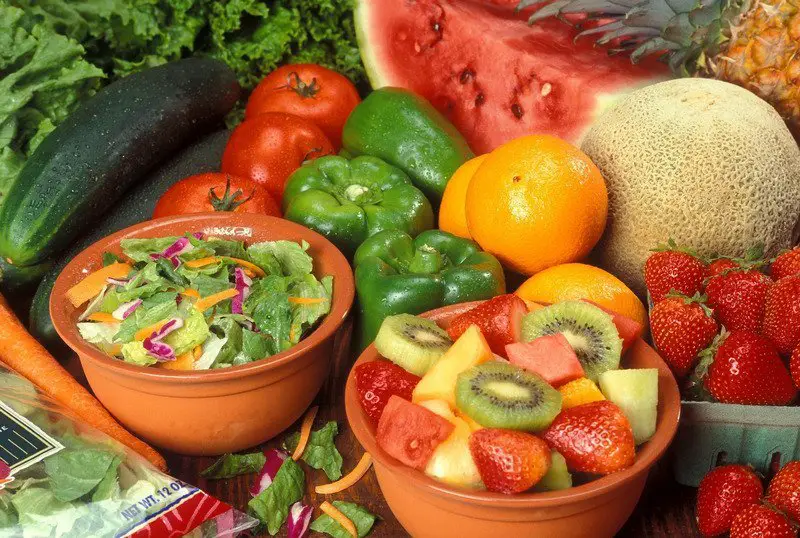Which of the Following Foods are Good Sources of Magnesium?
Which of the Following Foods are Good Sources of Magnesium? Magnesium is an abundant mineral in the body. Magnesium is naturally present in many foods, and it is added to other food products. Magnesium is available as a dietary supplement and it is present in some medicines (such as antacids and laxatives). Almonds, pumpkin seeds, and spinach are very high in magnesium.
Magnesium is a cofactor in more than 300 enzyme systems that regulate diverse biochemical reactions in the body, including protein synthesis, muscle and nerve function, blood glucose control, and blood pressure regulation. The following foods are a good source of magnesium.
Foods High In Magnesium List
|
Sources of Magnesium (mg) per |
Percent
DV* |
|
|---|---|---|
| Almonds, dry roasted, 1 ounce | 80 | 20 |
| Spinach, boiled, ½ cup | 78 | 20 |
| Cashews, dry roasted, 1 ounce | 74 | 19 |
| Peanuts, oil roasted, ¼ cup | 63 | 16 |
| Cereal, shredded wheat, 2 large biscuits | 61 | 15 |
| Soymilk, plain or vanilla, 1 cup | 61 | 15 |
| Black beans, cooked, ½ cup | 60 | 15 |
| Edamame, shelled, cooked, ½ cup | 50 | 13 |
| Peanut butter, smooth, 2 tablespoons | 49 | 12 |
| Bread, whole wheat, 2 slices | 46 | 12 |
| Avocado, cubed, 1 cup | 44 | 11 |
| Potato, baked with skin, 3.5 ounces | 43 | 11 |
| Rice, brown, cooked, ½ cup | 42 | 11 |
| Yogurt, plain, low fat, 8 ounces | 42 | 11 |
| Breakfast cereals, fortified with 10% of the DV for magnesium | 40 | 10 |
| Oatmeal, instant, 1 packet | 36 | 9 |
| Kidney beans, canned, ½ cup | 35 | 9 |
| Banana, 1 medium | 32 | 8 |
| Salmon, Atlantic, farmed, cooked, 3 ounces | 26 | 7 |
| Milk, 1 cup | 24–27 | 6–7 |
| Halibut, cooked, 3 ounces | 24 | 6 |
| Raisins, ½ cup | 23 | 6 |
| Chicken breast, roasted, 3 ounces | 22 | 6 |
| Beef, ground, 90% lean, pan broiled, 3 ounces | 20 | 5 |
| Broccoli, chopped and cooked, ½ cup | 12 | 3 |
| Rice, white, cooked, ½ cup | 10 | 3 |
| Apple, 1 medium | 9 | 2 |
| Carrot, raw, 1 medium | 7 | 2 |
Why Are People Magnesium Deficit?
Magnesium food sources do not have as much magnesium because of the deficiency of nutrients in the soil. Many people have magnesium deficits because of chronic diseases, medications, inadequate diets, and processed foods.
Certain individuals will need to supplement with magnesium in order to prevent suboptimal magnesium deficiency, especially if trying to obtain an optimal magnesium status to prevent chronic disease.
Low magnesium is especially associated with heart disease and diabetes.
The status of magnesium in the body is controlled by the kidneys. Even if the kidneys are working well, the body might pull magnesium from the bone, muscles, and organs in order to maintain serum levels. Therefore, serum levels of magnesium are not accurate.
Heavy metals and a lack of minerals in the soil contribute to magnesium deficiency.
Magnesium Supplements
If people are unable to eat the required amount of foods, supplements are an excellent idea. This article talks about the different types of magnesium supplements.
I can’t stress enough the importance of eating a diet high in magnesium. However, just know that the way the vegetable and fruits are farmed in today’s time, the soil is stripped of nutrients. Therefore, the crops are stripped of vital nutrients.
This is the recommended daily allowance of magnesium table:
| Age | Male | Female | Pregnancy | Lactation |
|---|---|---|---|---|
| Birth to 6 months | 30 mg* | 30 mg* | ||
| 7–12 months | 75 mg* | 75 mg* | ||
| 1–3 years | 80 mg | 80 mg | ||
| 4–8 years | 130 mg | 130 mg | ||
| 9–13 years | 240 mg | 240 mg | ||
| 14–18 years | 410 mg | 360 mg | 400 mg | 360 mg |
| 19–30 years | 400 mg | 310 mg | 350 mg | 310 mg |
| 31–50 years | 420 mg | 320 mg | 360 mg | 320 mg |
| 51+ years | 420 mg | 320 mg |
References:
https://ods.od.nih.gov/factsheets/Magnesium-HealthProfessional/
https://medlineplus.gov/ency/article/002423.htm
My name is Phyllis Robinson MSN, RN. I have been a Registered Nurse for 27 years in the Cardiac Intensive Care Unit. I am passionate about cardiac care and heart disease. I also want this blog to be an educational tool that people can refer to for traditional and alternative treatment. I will blog on heart disorders such as high blood pressure, congestive heart failure, cardiomyopathy, and high cholesterol.
I received my Nursing degree from Baltimore Community College.
I went on to receive my Masters in Nursing from Walden University
I have worked for almost 30 years in Critical Care with a focus on heart health. I am an advocate of preventive healthcare.

